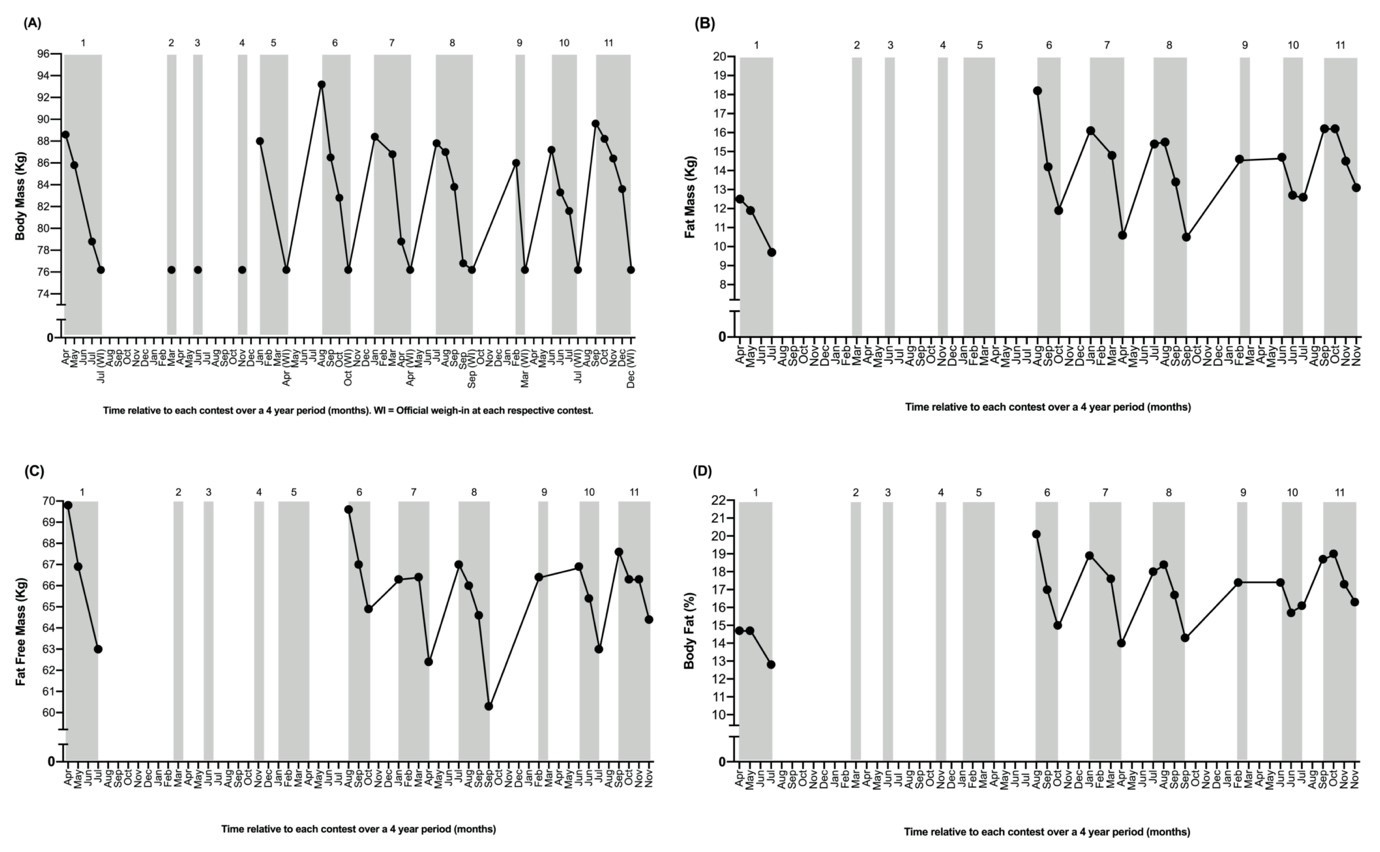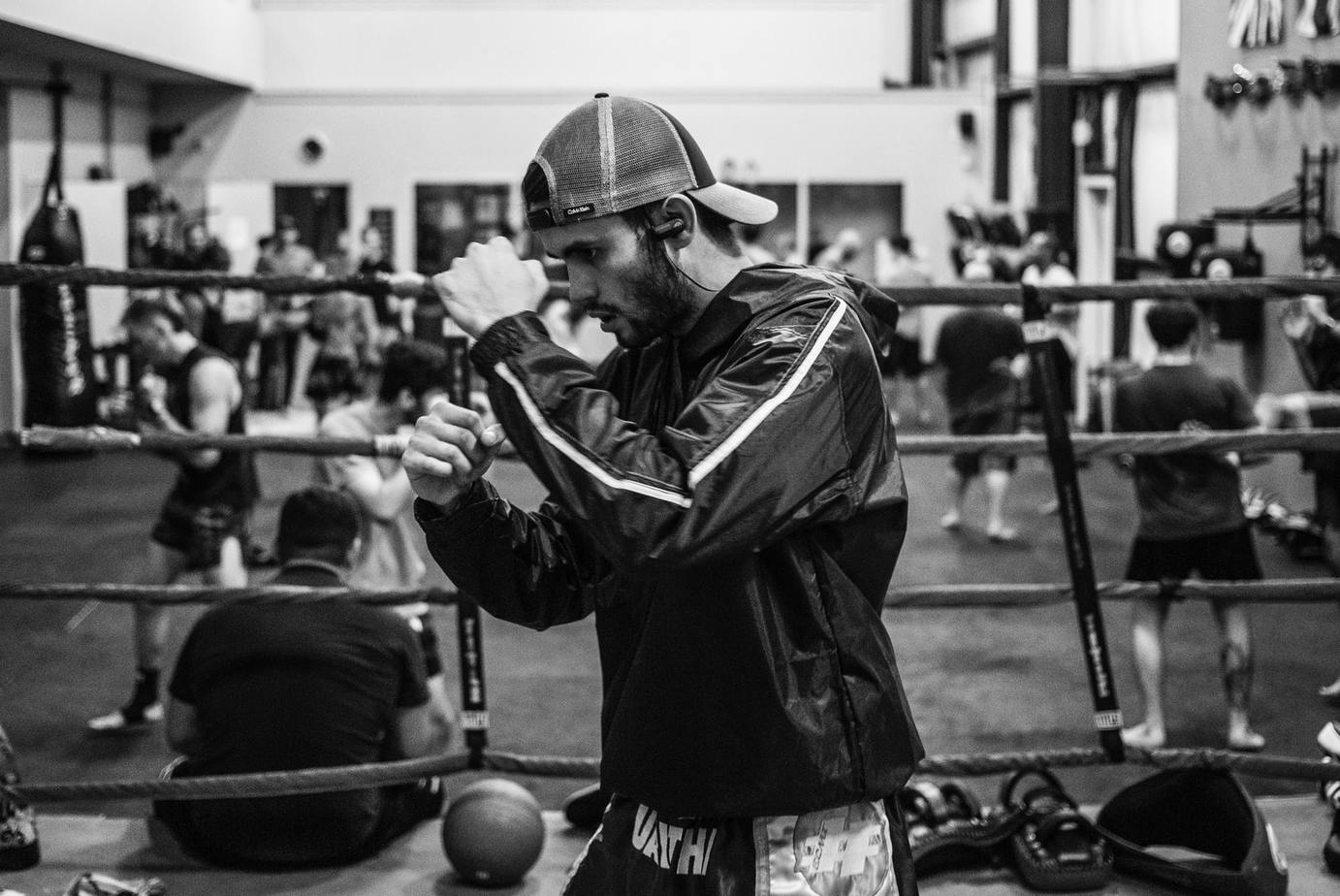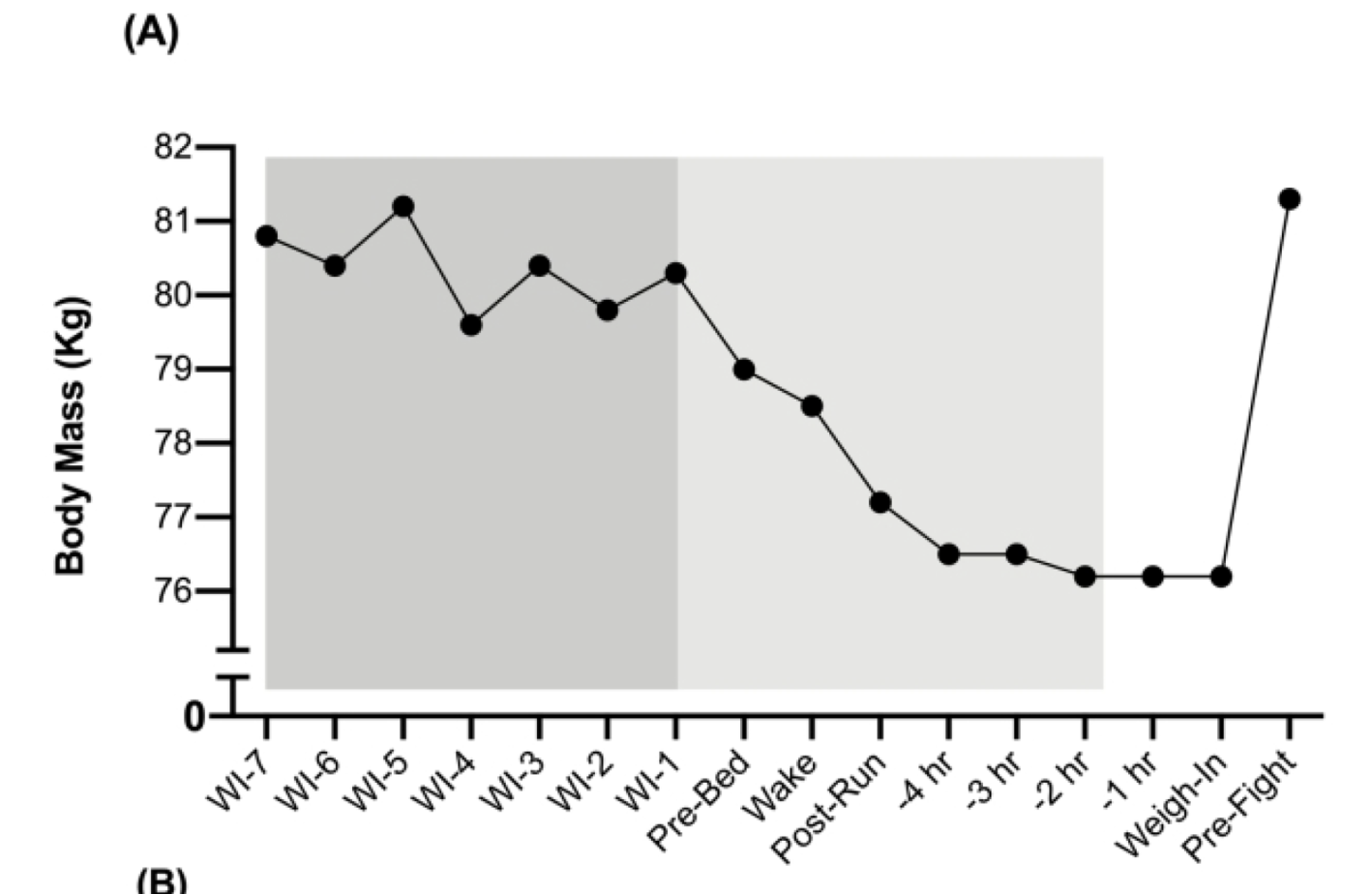Done correctly, cutting weight for a fight can give you a massive advantage over your opponents. You'll be bigger, stronger, and more energized allowing you to dominate your opponent. However, getting your weight cut wrong can lead to many complications.
Not just being depleted in the ring, octagon, or on the mats. But potentially ending up in hospital. Or even death.
This is why it's of utmost importance to learn how to cut weight safely and effectively for your next fight. But first, we must define what a weight cut is as there is a big difference between just losing weight and cutting weight for a fight.
Quick Disclaimer:
The contents of this blog, such as text, graphics, images, and other material contained within are for informational purposes only and do not constitute medical advice; the blog is not intended to be a substitute for professional medical advice, diagnosis, or treatment. Always seek the advice of a physician/doctor or other qualified health providers with any questions you may have regarding changes to your diet, hydration, and body weight manipulation. Never disregard professional medical advice or delay in seeking it because of something you have read in this book.
Making weight for athletic competition through food restriction, dehydration, induced sweating, and other means outlined in this blog, carries risks to your health. Reliance on any information provided by this blog is solely at your own risk.
The author, publisher, or Sweet Science Of Fighting do not take any responsibility for how you choose to use this material. It is to help you make an informed decision. This should not be confused for prescribing you direct advice to follow. We advise you to enlist the services of a dietitian, doctor, and/or other registered healthcare professionals if you plan on manipulating your diet to make weight for a sporting contest.
What Is Weight Cutting?
Weight cutting starts by trying to reduce fat mass whilst maintaining or even gaining lean mass before the week of the fight. The weight cut refers to the short-term weight loss that occurs during the final week of fight preparation.
Before a competition, combat sports athletes have their body mass verified at the official 'weigh in' to ensure they meet the weight requirements of their competitive division.
Within combat sports, this is known as 'making the weight'. The actual time duration between the weigh-in and stepping into the ring for competition differs between sports, however, a recovery period of at least 3 and up to 24h exists among the Olympic combat sports [4].
The manipulation of body composition before a competition is best done gradually, as shown by previous case studies in combat sports athletes from colleagues of mine at Liverpool John Moores University [1–3].
A recent publication of mine published in the International Journal of Sports Nutrition and Exercise Metabolism shows body composition changing substantially over time.

Body mass, fat mass, fat-free mass, and body fat percentage changes over time during 11 contests.
Put simply, this figure shows how the body composition of a combat sports athlete changes over time. You should strive to have a better body composition profile towards the end of each camp, compared to the start of each camp.
Ultimately, you should at your “optimal” body composition when entering the final 7 days before the weight cut.
If done correctly, the weight cut should be a planned, prepared, and easy process to perform which will result in a well-nourished, well-hydrated, and happy athlete in the ring, octagon, or on the mats.
If implemented poorly with minimal evidence or by individuals who are not registered nutritionists/dieticians, the athlete can struggle, experience distress, and in some instances end up in hospital. It can get worse with some fighters potentially losing their life.
Essentially, get the recovery from ‘making the weight’ wrong and it could easily negatively impact your fight performance.
What Are The Benefits Of Cutting Weight For A Fight?

Many combat sports athletes believe that cutting weight before a fight result in advantages over their opponent. Mainly, the ability to rebound in weight allowing you to enter the competition heavier than your opponent.
This weight advantage can be used in the clinch, up against the ropes, finishing takedowns, and even defending various grappling techniques.
Interestingly, studies correlating weight manipulation strategies to competitive outcomes in boxing have reported greater weight loss and regain to improve [5,6] or have no influence on competitive success [7,8].
However, although data is limited and warrants research, weight regain may have a greater influence in grappling and MMA where weight advantage players a bigger role when wrestling.
With this in mind, it does depend on what you prefer to do, what has been practiced in training, and what works best for you.
Irrespectively, ensuring individual strategies are implemented is key, rather than trying to copy and paste one weight-making strategy to the other.
In my experience, making sure you are well-nourished and well hydrated with plenty of room for short-term weight loss will ensure you enjoy the process of the weight cut itself.
Following this, you will also enjoy weight regain as you can replace fluids lost and ensure you are rehydrated.
This means you can enjoy a substantial amount of energy and replace the glycogen in the muscles ready for the fight. Always remember a happy fighter is a dangerous fighter.
The opposite of this is a fighter who enters the final week of the short-term weight loss dehydrated and having undereaten. They will already be struggling and in most cases, should not put their body through further short-term weight loss. This can be dangerous and should be reconsidered.
How Much Weight Is Too Much Weight To Cut?
It is widely accepted within the industry and literature that decreases >10% body mass in the final few days before a competition can be dangerous and should not be attempted.
The current literature suggests that fighters commonly lose ≥5% body mass in the week before weigh-in [9]. However, as mentioned this is very individual, and whilst it is acknowledged there is no single ‘ideal’ short term weight loss target, under some conditions, short term weight loss of 5–8% body mass may have an acceptably small impact on health and performance.
Again, the starting point before short-term weight loss (or the weight cut) should represent body mass associated with a fully hydrated, well-nourished state, offering plenty of opportunity for meaningful manipulation of gut content and body water [4].
Where possible you should always assess body competition using standardized measurement methods and regularly and correctly collect body weight. This will give you a far greater insight as to how much bodyweight needs to be lost in the final few days.
When cutting >10% body weight in the final few days before a fight, big problems can occur especially to your health.
See these videos for an example:
In my recent publication, I present data showing an approx. 5kg decrease in body mass during the final 5-day period before the official weigh-in (see below) which was typical of the way Rocky Fielding made weight for the 11 camps that we worked together over the last 4-5 years.

You can see how Rocky was still above 80kg the day before the weigh-in and lost between 3-4 kg in the final 24 hours. This represented about 5% of his body weight.
How To Start Cutting Weight ‘5 days’ Before A Fight
How you start your weight cut 5 days before a fight is highly dependent on your body mass at the start of the fight week. This guide will help you make weight if you are 3-4 kg over your target weight which is ideally where you should be.
Day 5
Day 4
Day 3
Day 2
Day 1
Weigh-in day
The Ultimate Weight Cutting Course
If you'd love to cut weight painlessly, with half the suffering everyone else goes through (and without the risk of hospitalization... or death), then this will be the most life-changing message you'll ever read! Click the button below to learn more!
Signs You Should Stop Your Weight Cut And See A Professional
For me, I would rephrase this and ask yourself the question: “Are you well hydrated, well-nourished, and have less than 10% body weight to drop in the final 5-7 days?”
If the answer is yes, then you are in a good place to enter the final week of your weight cut and making the weight. If you are already dehydrated and have dropped your energy intake, I would seriously consider if you should progress with the weight cut and I would advise against doing it.
If this is you or you know an athlete who struggles with their weight then please reach out to me and I would be happy to work together: [email protected]
If you are in a great starting position for the weight cut, but then experiences headaches, poor sleep, and generally feel unwell, then I would stop the weight cut and consider pulling out of your fight.
We must look after your health and well-being and be confident that you are in a healthy position to go ahead and perform and fight.
"A really massive part of the success was the weight cut." - Rocky Fielding (WBA Super Middleweight Champion)
"Dr. James Morehen knew my body better than me. My performances were staying, my training in the gym, my sleep pattern was good. I wasn't going to bed starving, I was getting good rest in and sleep in." - Rocky Fielding (WBA Super Middleweight Champion)


References

